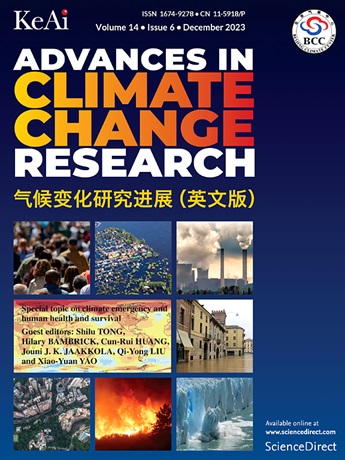Permafrost‒vegetation controls on water availability over the Qinghai‒Tibet Plateau
IF 5.2
1区 地球科学
Q1 ENVIRONMENTAL SCIENCES
引用次数: 0
Abstract
Permafrost degradation substantially affects water resources within the cryosphere. It is crucial to elucidate the dynamics of water availability influenced by both permafrost degradation and climate change to fully comprehend the water cycle in cold regions, such as the Qinghai‒Tibet Plateau (QTP). While existing studies have established the hydrological consequences of permafrost degradation through altered soil hydraulics and water storage capacity, the complex interplay between thawing permafrost and vegetation dynamics—particularly their synergistic regulation of precipitation partitioning and runoff generation through root-zone water accessibility—are poorly understood, creating critical knowledge gaps in predicting long-term water availability trajectories. In this study, we explore the influence of permafrost-vegetation interactions on regional water availability on the QTP by integrating the effects of permafrost degradation on vegetation into the Budyko-Fu model. Our results reveal a consistent increase in surface runoff (R) of the permafrost regions from 1981 to 2100, predominantly driven by rising precipitation. However, shifts in vegetation patterns, prompted by permafrost degradation, significantly modify hydrological partitioning, leading to non-monotonic variations in the runoff to precipitation ratio (R/P). Notably, early-stage permafrost thaw enhances vegetation growth and evapotranspiration, which results in a decrease in R/P. Conversely, deeper permafrost thaw (e.g., beyond the root zone of vegetation) can lead to vegetation degradation, which subsequently reduces evapotranspiration and consequently increasing the R/P ratio. These findings underscore the pivotal role of vegetation in regulating the hydrological cycle and affecting water availability in permafrost-affected regions.
青藏高原冻土-植被对水分有效性的控制
永久冻土退化严重影响冰冻圈内的水资源。阐明冻土带退化和气候变化共同影响下的水分有效性动态,对于全面认识青藏高原等寒区的水循环至关重要。虽然现有的研究已经通过改变土壤水力学和蓄水能力确定了永久冻土退化的水文后果,但对永久冻土融化与植被动态之间复杂的相互作用——特别是它们通过根区水可及性对降水分配和径流生成的协同调节——了解甚少,这在预测长期水可用性轨迹方面造成了关键的知识空白。在本研究中,我们通过将多年冻土退化对植被的影响纳入Budyko-Fu模型,探讨了多年冻土-植被相互作用对QTP区域水分有效性的影响。研究结果表明,1981年至2100年,冻土区地表径流(R)持续增加,主要受降水增加的驱动。然而,多年冻土退化导致的植被格局变化显著改变了水文分配,导致径流与降水比(R/P)的非单调变化。值得注意的是,冻土带早期解冻促进了植被生长和蒸散,导致R/P降低。相反,较深的永久冻土融化(例如,超出植被根区)可能导致植被退化,从而减少蒸散,从而增加R/P比。这些发现强调了植被在受冻土影响地区调节水文循环和影响水分供应方面的关键作用。
本文章由计算机程序翻译,如有差异,请以英文原文为准。
求助全文
约1分钟内获得全文
求助全文
来源期刊

Advances in Climate Change Research
Earth and Planetary Sciences-Atmospheric Science
CiteScore
9.80
自引率
4.10%
发文量
424
审稿时长
107 days
期刊介绍:
Advances in Climate Change Research publishes scientific research and analyses on climate change and the interactions of climate change with society. This journal encompasses basic science and economic, social, and policy research, including studies on mitigation and adaptation to climate change.
Advances in Climate Change Research attempts to promote research in climate change and provide an impetus for the application of research achievements in numerous aspects, such as socioeconomic sustainable development, responses to the adaptation and mitigation of climate change, diplomatic negotiations of climate and environment policies, and the protection and exploitation of natural resources.
 求助内容:
求助内容: 应助结果提醒方式:
应助结果提醒方式:


